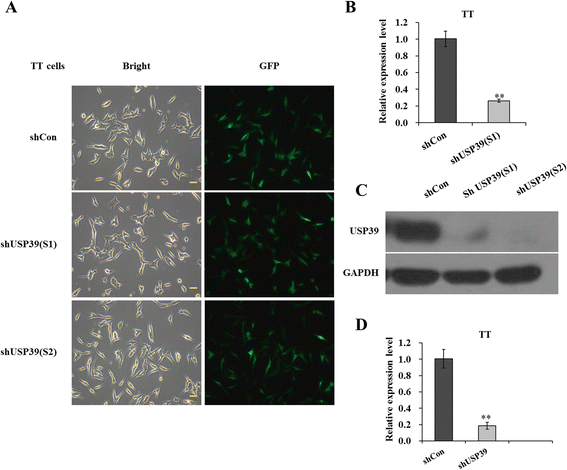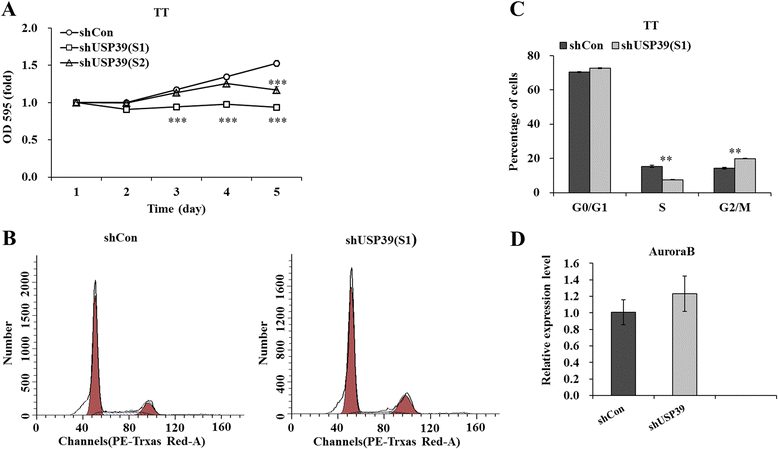Reduced USP39 expression inhibits malignant proliferation of medullary thyroid carcinoma in vitro
- PMID: 26303214
- PMCID: PMC4549085
- DOI: 10.1186/s12957-015-0669-4
Reduced USP39 expression inhibits malignant proliferation of medullary thyroid carcinoma in vitro
Abstract
Background: Medullary thyroid carcinoma (MTC) constitutes approximately 5 % of all thyroid cancers and carries a worse prognosis than other differentiated thyroid cancers. Targeted therapies are being investigated for systemic treatment of MTC. Ubiquitin-specific peptidase 39 (USP39) functions in pre-mRNA splicing as a component of the U4/U6-U5 tri-snRNP and also participates in spindle checkpoint and cytokinesis. In this study, we aimed to evaluate the potential role in MTC.
Methods: We used lentivirus-delivered short hairpin RNA (shRNA) to silence USP39 expression in one MTC cell line TT. USP39 expression was detected by qPCR and Western blot. For functional analysis, MTT assay was performed to evaluate the proliferation activity, and FACS was used to assess the cell distribution in the cell cycle. Moreover, the expressions of cell cycle-related proteins were examined by Western blot.
Results: Both two shRNA sequences against USP39 could efficiently reduce its expression in TT cells. Knockdown of USP39 significantly decreased cell proliferation and caused cell cycle arrest at G2/M phase. Moreover, G2/M phase-associated proteins, Cyclin B1 and CDK1, were obviously down-regulated in TT cells after USP39 silencing.
Conclusions: Therefore, knockdown of USP39 is likely to provide a novel alternative to targeted therapy of MTC and deserves further investigation.
Figures



References
LinkOut - more resources
Full Text Sources
Other Literature Sources
Molecular Biology Databases
Miscellaneous

